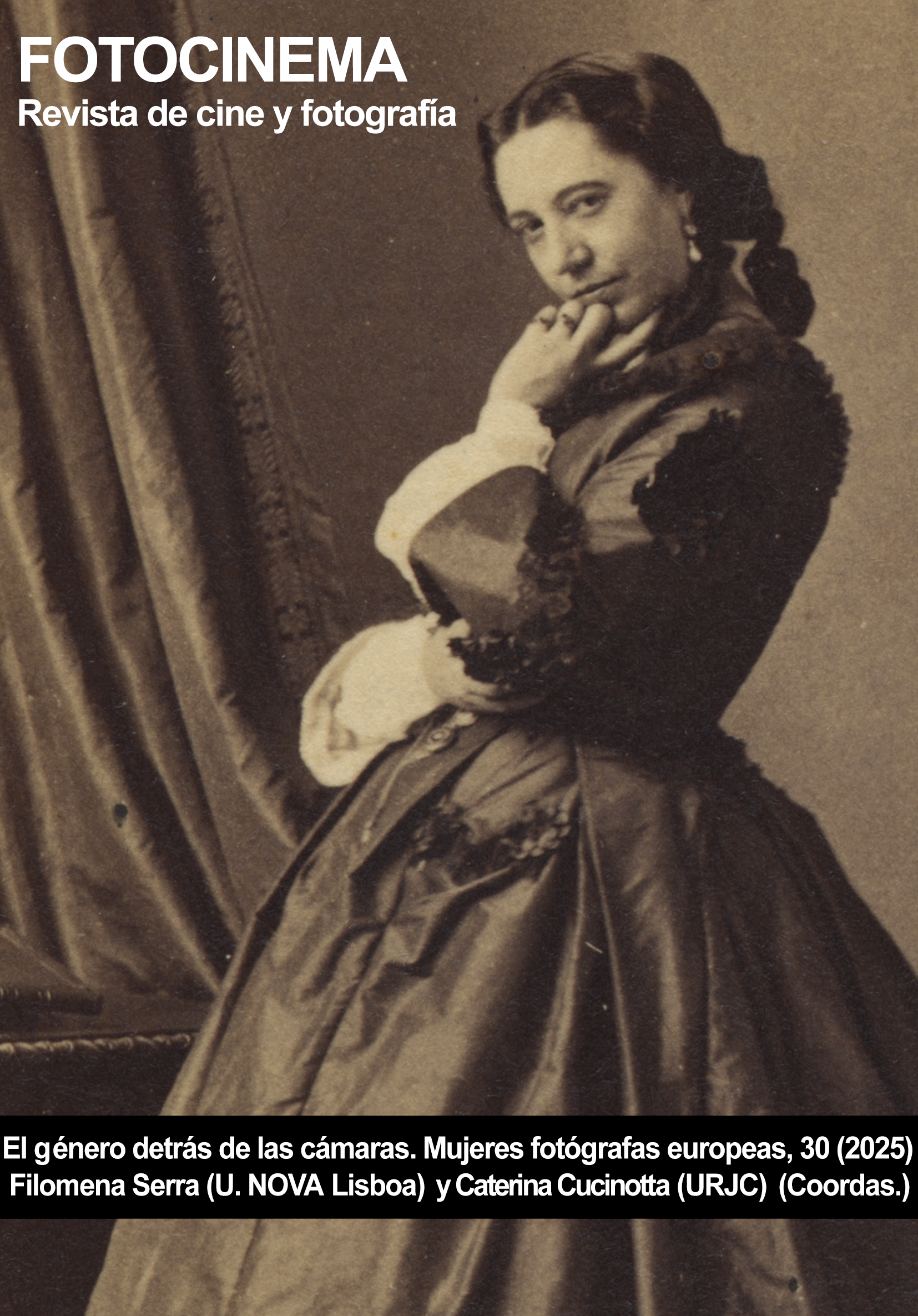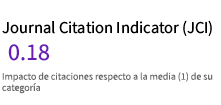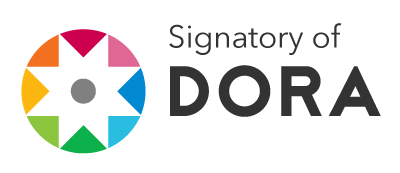Visual ecology for galleries and museums: Antonio Guerra and the renewal of landscape photography
DOI:
https://doi.org/10.24310/fotocinema.30.2025.20478Keywords:
post-fotography, installations, land art, museums and galleries, aura, landscape, travellerAbstract
Antonio Guerra (Zamora, 1983) is a young photographer with a career of admirable coherence in his variety of thematic proposals, which masterfully combine aesthetic contemplation with a sharp conceptual inquiry. Trained in the era of post-photogr@phy (Joan Fontcuberta), his multidisciplinary artistic installations invite the viewer to reflect on the landscape as an ideological construction while stimulating a respectful approach to nature. Through a language traditionally linked to mass reproduction and ubiquity, according to Walter Benjamin's theories, “auratic” experience effects are achieved in galleries and museums, in a similar way to the conceptual and contemplative stimulus provoked by Land Art. To show the tradition and novelty of this artist, both the evolution of landscape in the traditional arts and the integration of photography in the context of other contemporary artistic creations are analyzed.
Downloads
Metrics
References
Arroyo, C. (2019). Artealización y ecología. Paisajes productivos sostenibles, Dearq, 1 (24). https://revistas.uniandes.edu.co/index.php/dearq/article/view/3361/2274
Berque, A, (1995). Les raisons du paysage. De la Chine Antique aux environnements de synthèse. Hazan.
Bravo, L. (2003). La documentación literaria en la construcción de la ficción fotográfica: pruebas y trampas en la obra escrita de Joan Fontcuberta. Tropelías: Revista de Teoría de la Literatura y Literatura Comparada, (12-14), pp. 59–71. https://doi.org/10.26754/ojs_tropelias/tropelias.200312-145787
Breton, D. (2014). Elogio del caminar. Madrid: Siruela.
Didi-Huberman, G. (2006). Lo que vemos. Lo que nos mira. Buenos Aires: Manantial.
Fontcuberta, J. (2003). Estética de la fotografía. Barcelona: G. Gili.
Fontcuberta, J. (2020). La Furia de las imágenes: Notas sobre la postfotografía, Barcelona: Galaxia Gutemberg.
Gombrich, E. H. (1997). La Historia del Arte, Nueva York: Phaidon.
Guerra, A. Dossier de presentación de su obra entregado a los autores.
Guerra, A. (2022). La luz que nos ciega Cádiz: Dalpine&Kursala.
Guerra, A. (2022). Entrevista en LUR: https://e-lur.net/dialogos/antonio-guerra/(consultado el 25/09/2023)
Groys, B. (1999). The artist as an exemplary art consumer, XIV Congreso Internacional de Estética (pp. 81-96). Lubliana, I.
Groys, B. (2008). El lugar de la fotografía, en J. Fontcuberta (ed.), ¿Soñarán los androides con cámaras fotográficas? Ministerio de Cultura de España.
Holt, N. (Ed.) (1979). The writings of Robert Smithson, Nueva York University Press.
Jenkins, W. (1975). New Topographics: Photographs of a Man-Altered Landscape. Catalogue. Rochester, NY: International Museum of Photography at the George Eastman House.
Kalahora, B. (1993). Le Musée Vert. Radiographie du loisir en forêt, Éditions L’Harmattan.
Krauss, R. E. (2002). Lo fotográfico: por una teoría de los desplazamientos, Gustavo Gili.
Krauss, R. E. (1985). La escultura en el campo expandido., En H. Foster, La posmodernidad, Kairós (El artículo se publicó por primera vez en October, 8, primavera, 1979).
Latorre, J. y Jiménez, M. (2021). La metrópolis humanizada: Relaciones estéticas e ideológicas entre Manhatta y las sinfonías urbanas europeas. En La identidad europea en las artes audiovisuales (pp. 119-140). Comunicación Social Ediciones y Publicaciones, http://espejodemonografias.comunicacionsocial.es/article/view/4785
Limón, N. (2011). Debates en torno a la musealización de la fotografía: la convivencia de dos paradigmas en continua resignificación. En R. De la Villa (dir. congr.), Sociedades en crisis: Europa y el concepto de estética, pp. 269-277.
Lyotard, J. F. (1998). Lo inhumano. Charlas sobre el tiempo. Manantial.
Maderuelo, J. (2005). El paisaje. Génesis de un concepto. Abada.
Madeuelo, J. (2008). La construcción del paisaje contemporáneo. CDAN.
Maderuelo, J. (1990). El espacio raptado. Interferencias entre arquitectura y escultura, Mondadori.
Marchán, S. (1988). Del arte objetual al arte de concepto. Epílogo sobre la sensibilidad “posmoderna”. Ediciones Akal.
Martín de Madrid, P. S. (2020). Joan Fontcuberta y orogénesis: los paisajes alfanuméricos. Revista Gama, Estudios Artísticos. 8(15) janeiro-junho, 96-105.
Méndez, M. (2020). Carmen Dalmau y Antonio Guerra: Horizontes de Sucesos. EFTI, 11/09/2020. https://efti.es/noticias/carmen-dalmau-y-antonio-guerra-horizontes-de-sucesos
Milani, R. (2007). El arte del paisaje. Biblioteca Nueva.
Naef, W. J., Stuffman, M. y Christadler, M. (1994), Pioneers of Landscape Photography, Gustave Le Gray, Carleton E. Watkins, Oxford University Press.
Quetglas, J. (2021). A Casandra. Cuatro charlas sobre mirar y decir. Ed. Asimétricas.
Roger, A. (2007). Breve tratado del paisaje. Biblioteca Nueva.
Santamaría, A. E. (2015), El arte emboscado: el regreso al bosque en la práctica artística desde 1968, tesis doctoral defendida en la UCM. Eva Fernández del Campo Barbadillo (dir. tes.)
Santamaría, A. E. (2024). “La ‘artealización’ del bosque de Fontainebleau y las trabas de la consumación cultural”. Espacio Tiempo y Forma. Serie VII, Historia del Arte, (12), 3–24.
Sontang, S. (2006). Sobre la fotografía. Santillana Ediciones Generales.
Talbot, W.H.F (1994). The pencil of Nature. Ed. Metropolitan Museum.
Ubieto, (2023). El medio es el paisaje. Texto de comisariado. Extracto en: https://www.antonioguerra.eu/textos.html
Downloads
Published
How to Cite
Issue
Section
License
Copyright (c) 2025 Jorge Latorre Izquierdo, Ana Esther Santamaría Fernández

This work is licensed under a Creative Commons Attribution-NonCommercial-NoDerivatives 4.0 International License.
All contents published in Fotocinema Revista científica de cine y fotografía are protected under the Creative Commons Attribution-NonCommercial-ShareAlike 4.0 International (CC BY-NC-SA 4.0) license. All about this license is available in the following link: <http://creativecommons.org/licenses/by-nc-sa/4.0>
Users can copy, use, redistribute, share and exhibit publicly as long as:
- The original source and authorship of the material are cited (Journal, Publisher and URL of the work).
- It is not used for comercial purposes.
- The existence of the license and its especifications are mentioned.
There are two sets of authors’ rights: moral and property rights. Moral rights are perpetual prerogatives, unrenounceable, not-transferable, unalienable, imprescriptible and inembargable. According to authors’ rights legislation, Fotocinema. Revista científica de cine y fotografía recognizes and respects authors moral rights, as well as the ownership of property rights, which will be transferred to University of Malaga in open access. The property rights are referred to the benefits that are gained by the use or the dissemination of works. Fotocinema. Revista científica de cine y fotografía is published in an open access form and it is exclusively licenced by any means for doing or authorising distribution, dissemination, reproduction, , adaptation, translation or arrangement of works.
Authors are responsable for obtaining the necessary permission to use copyrighted images.













13.png)



